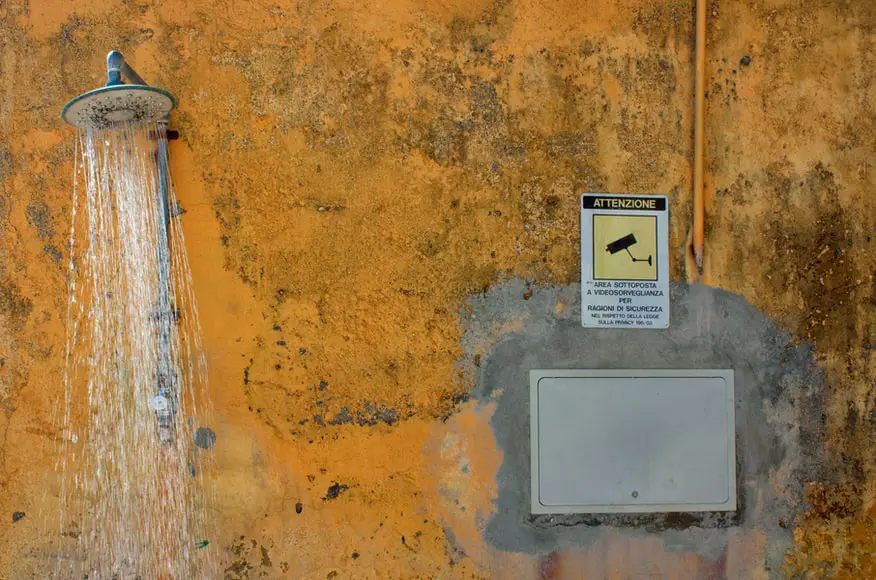Showering with a Full Tank, Septic tanks- not quite the best topic to discuss. In modern homes, however, drain systems have a way of remaining bland. Unless the toilet is overflowing, or the bath spigot isn’t functioning, plumbers and pipefitters aren’t usually on our minds.
But can you shower if your septic tank is full? Well, whether you’ve recently installed a new septic tank, or you’re considering doing some routine underground septic tank maintenance, it’s best to understand the workings of the tank so you can know what to do when, if at all, it gets full.
Table of Contents
Can I Shower If My Septic Tank Is Full?

The answer is yes. You can take a shower if your septic tank is full. The main problem you’re probably going to face is that of slow seepage. As the septic tank continues to fill up, you will realize that the water in the shower tub, sinks, and more will begin to drain much slower.
It’s important to note that in some cases, shower drains don’t lead into the septic systems but directly into sewage lines, given that there’s no solid waste within. This is, however, relatively rare, considering that builders almost always join the shower drains with toilet drains.
If your shower drain does lead to a septic tank, you won’t really be doing as much damage to your tank since this is just liquid water. Nevertheless, doing so isn’t advisable.
What to Do if Your Septic Tank is Full
Preparedness is the key. If your system is full, it is best to have it pumped before the rainy season or storm. Make sure the rain gutters are clean and clear to allow water passage around your drain field and prevent puddles.
We recommend you simply get your septic tank pumped every two or three years unless you’re certain of what you are doing. In case you’re unable to estimate how long it takes for septic to fill up, you can always go by the “cross that bridge when you get there” strategy.
For that, you’ll need to know the signs of a filled-up septic tank. This includes noticing unwanted smells in the house and checking the cleanout between the house and the tank.
How Long Does It Take for a Septic Fill Up?
The question of how long it takes for a septic tank to fill up, or how often you need to pump your septic tank depends on how much waste you dispose of, the tank’s size, amount of solid waste in the wastewater stream, and water usage in the house.
On average, it can take up to 5 years for a regular, on-lot septic tank to fill up. But again, this is a very subjective answer.
As you may already know, you’ll most likely need to empty your septic tank much more often if you have a large family. Also, the more showers you take, and the longer the showers are, the faster the septic tank will fill up.
In the event that there are many people living in the house, you may have to pump the tank every three years. But if you live alone, or have a small family, then you could easily get away with pumping the tank every five to ten years.
What Happens When the Septic Tank Fills Up?
As earlier stated, some people suggest that they never had to pump their septic tank before, yet it seemed to be working fine. Well, that’s because as more and more floatable and settleable solids fill the tan, some particles begin escaping.
When the tank is full and there’s no more room for the tank to capture or store solids, particles start seeping through with the water. These are basically the particles that have been settled at the bottom or rather near the drain pipes enough to become soft and flow with the water.
The pressure imposed on the bottom layer can cause small solid particles to eventually escape. While this isn’t significant enough to cause any immediate danger, your property will have a pungent smell to it that both guests and passersby will notice.
How to Avoid Septic Tank Problems

A lot of septic tank problems are caused by clogs. Homeowners should remember that everything going into the sewage system eventually ends up in the septic tank.
Whether you’re flushing something down the bathroom, pouring it into the sink, or obliterating it with the garbage disposal, they all end up in the septic tank.
Some of the items you should never flush the following items down the toilet include feminine hygiene products, dental floss, paper towels, eggshells, coffee grounds, cigarette butts, band-Aids, diapers, etc. Also, keep the cooking grease away from your drains. Avoid putting solids down your sink and minimize the use of garbage disposal to prevent clogs.
It’s also important to keep the drain field free of heavy objects such as cars, tractors, motorcycles, or other heavy equipment. This is because excess weight puts pressure on the pipes underneath, which can lead to broken pipes and expensive repairs. Large trees near the drain field may also need to be removed.
The Bottom Line
The answer to the question of whether you can shower with a full septic tank is yes. However, although the shower water empties to the septic tank, you will experience a slow seepage in the shower tub and sinks.
How often you should empty your septic tank will depend on factors such as the tank’s size, amount of solid waste, and the number of people who are showering in the house.


